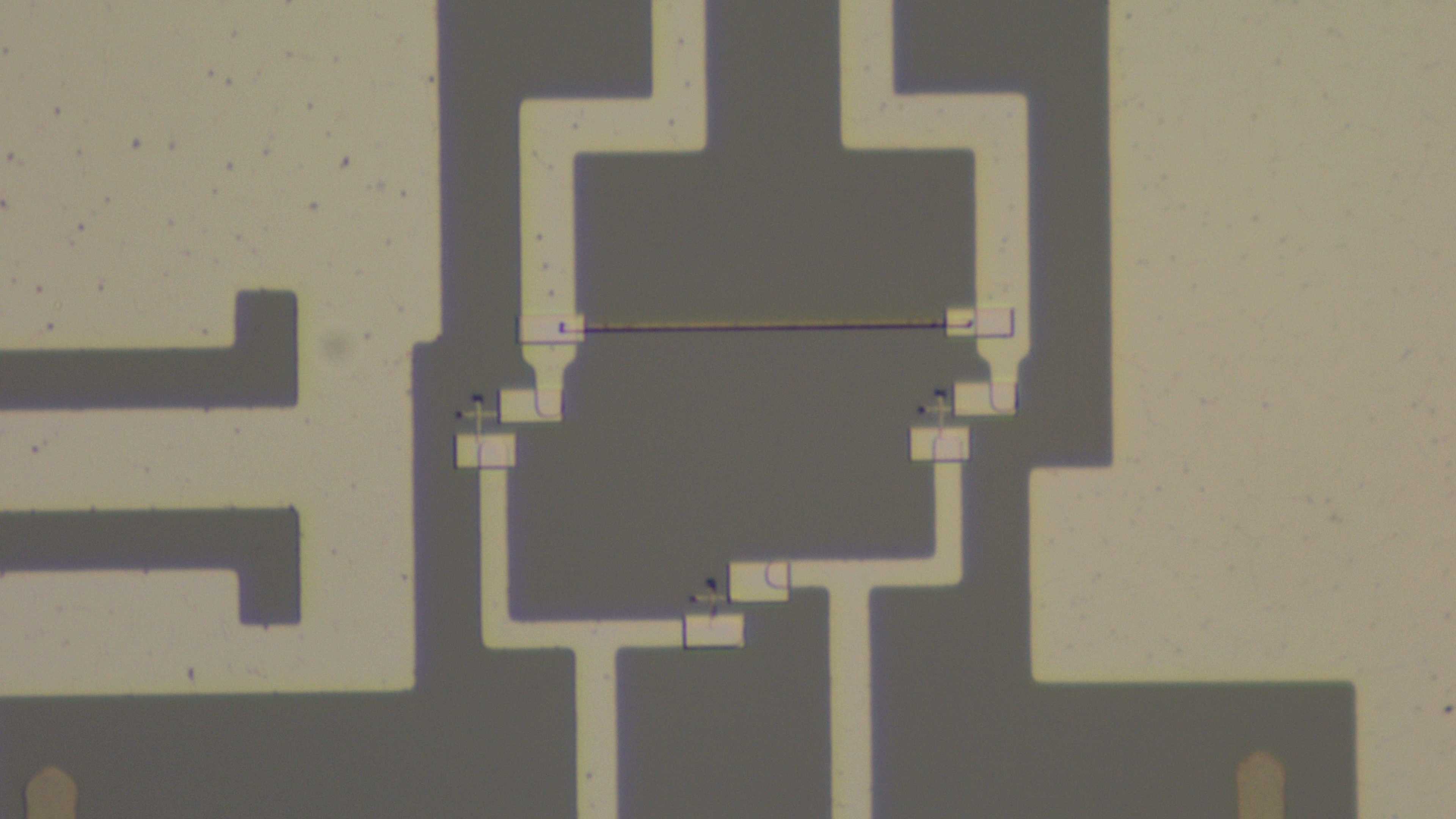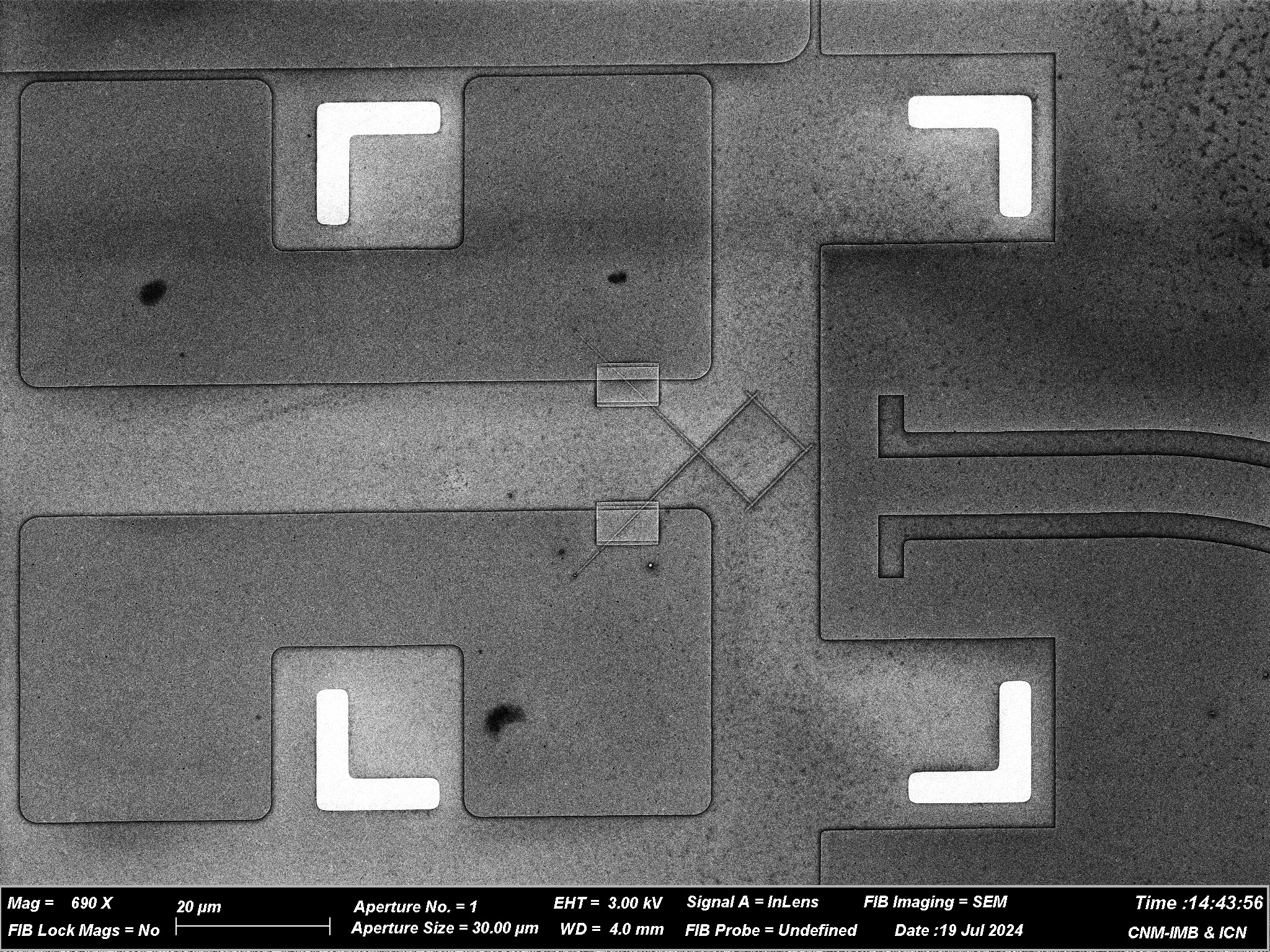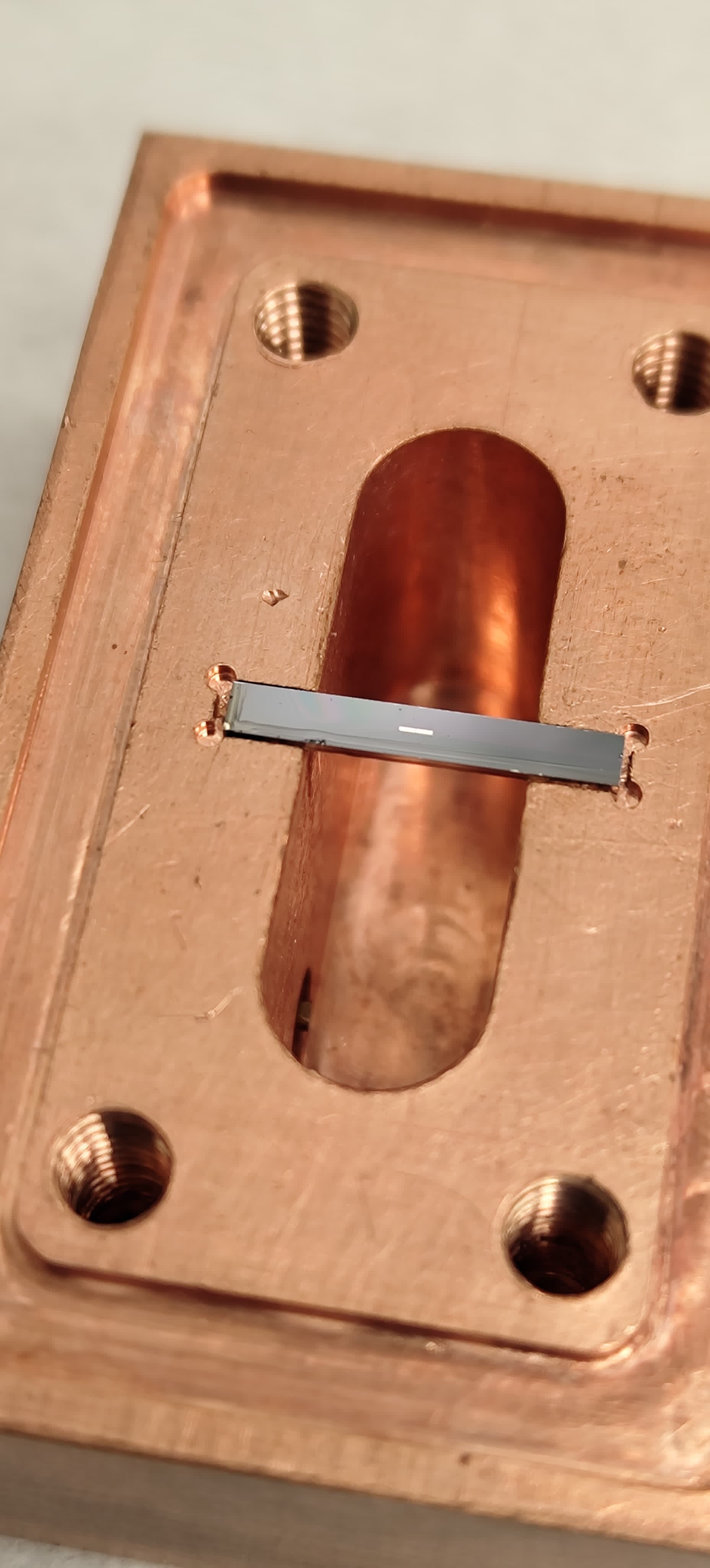Research
We build quantum processors out of superconducting quantum circuits. Superconducting qubits are constructed using Josephson junctions, which are nonlinear, nondissipative elements that generate an anharmonic spectrum of the circuit. The Josephson tunnel junction is a very thin superconductor-insulator-superconductor barrier that permits tunneling of the superconducting wave function across it. In engineering language, it behaves as a nonlinear inductor. Superconducting flux qubits consist of a ring interrupted by 4 Josephson junctions. The circuit is made out of aluminum.
Superconducting qubits are obtained out of two of the states of the Josephson circuit nonlinear spectrum. There exist different types of superconducting qubits depending on whether the Josephson energy stored in the junction dominates over the capacitive energy. The most widely used qubits are the persistent current flux qubit and the Cooper pair box transmon qubit.
Superinductor-based quantum techonologies with ultrastrong couplings
The simplest case of light-matter interaction is given by the Quantum Rabi model, where a two-level (artificial) atom interacts with an electromagnetic field mode. With superconducting quantum circuits one can engineer 2-level artificial atoms, cavities or resonators and couplings. In particular, the couplings can be made much larger than the ones achieved with natural atoms in optical cavities allowing the study of the so-called ultrastrong coupling (USC) regime, where unexplored physics take place.
In this project we aim to study a flux qubit galvanically coupled to an LC oscillator in the non-perturbative ultrastrong coupling regime. Instead of using Josephson Junctions as couplers, one can use superinductor materials. Superinductors showcase large sheet kinetic inductances and there are many examples in the literature. In our laboratory we focus mostly on granular aluminum (grAl) and nitridized aluminum (NitrAl), that we initially developed.
This line of work was started as part of the Quantera SiUCs project. It is being continued by other projects such as the NESQQ project.
Coherent quantum annealers
Superconducting quantum circuits are among the most promising platforms for quantum computing. Here at the QCT group we are focused especially on quantum annealing based on coherent flux qubits. This kind of quantum computer does not operate with individual gates in qubits, but it is able to find the solution to many interesting problems by changing the energy landscape of the entire qubit system.
Here at QCT group, we perform all the steps needed in situ: from chip design and simulation to measurements, passing through fabrication.
This line of work was started with the FET-Open AVaQus consortium project, coordinated by IFAE. It is currently being succeeded by the EuroQCS-Spain consortium, led by the Barcelona Supercomputing Center. EuroQCS-Spain will build an adiabatic quantum computer, or quantum annealer, hosted and operated by the Barcelona Supercomputing Center (BSC) in Spain and integrated into the EuroHPC world-class supercomputer MareNostrum 5 (MN5). The role of IFAE is to provide technical expertise, in particular focusing on defining a series of parameters that can be utilized to benchmark analog quantum processors employed for quantum annealing. EuroQCS-Spain will be available to a wide range of European users, from the scientific community to industry and the public sector.
Interaction and detection of high energy physics with qubits
Among others sources, one of the mechanisms that jeopardize superconducting qubits are phonon interactions generated from radioactive sources, including those of cosmic origin.
In IFAE, we are working on studying the impact of this type of radiation by associating qubits and sensors. Additionally, we also work on its suppression via shielding and quasiparticle trapping structures. Achieving this goal would imply a substantial increase in the quality of circuits in terms of coherence and stability and would enable new computing and sensing paradigms.
The functionality of superconducting quantum circuits has recently found a new field of application: in quantum sensing, superconducting qubits have been demonstrated as ultrasensitive detectors for radiation and, most prominently, dark matter searches.
One of the most promising candidates for dark matter searches are axions. Historically, the efforts for axion detection have been concentrated on searching for particles with a mass of the order of GeV via particle colliders. Due to the null results that have resulted from this, the efforts for axion detection are now concentrated on the range of GHz with axion haloscopes. In these experiments, an intense magnetic field is used to interact with axion fields. Dark matter models justify that, as a result of this interaction, a photon is produced. It is then when superconducting qubits come into play, as they function as excellent single photon detectors in the range of GHz. Thus, those circuits are an innovative and promising approach for axion detection, and the QCT group at IFAE is taking part in these efforts.
This line of research is part of the Spanish ICRQ consortium coordinated by IFAE, involving the Canfranc Underground Laboratory and the Institute of Microelectronics of Barcelona, as well as the Quantera consortium QRADES, where IFAE is part of.


